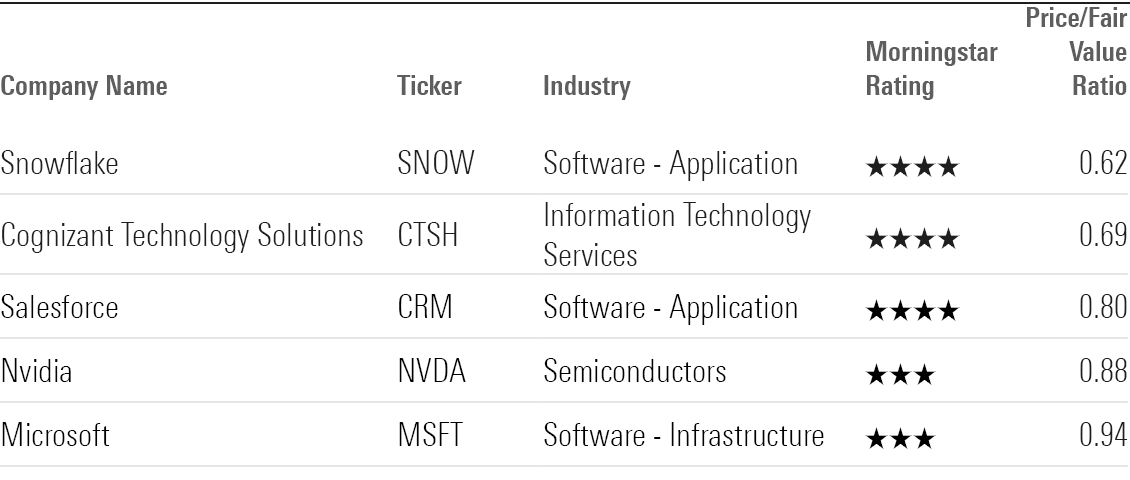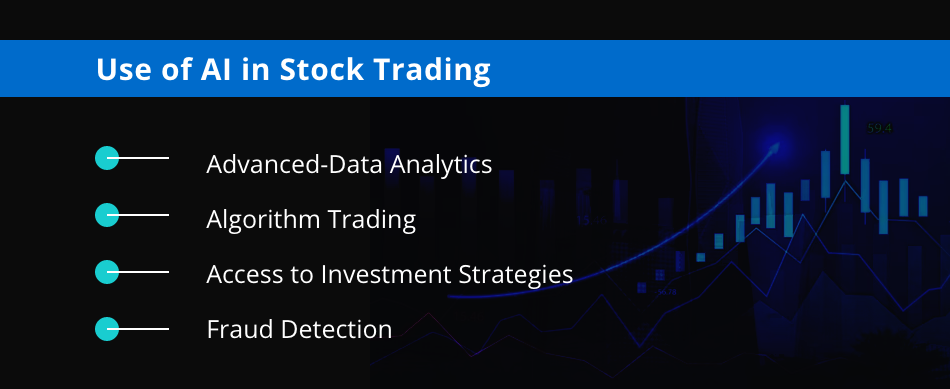20 Good Reasons For Deciding On AI Stock Analysis Sites
20 Good Reasons For Deciding On AI Stock Analysis Sites
Blog Article
Top 10 Suggestions On How To Assess The Strategy Customization Of Ai Trading Platforms
The capability to modify the trading platform to meet your goals in trading, tolerance for risk, and the current market conditions is an important feature of AI-based stock prediction and analysis trading platforms. Platforms that have powerful customization capabilities can improve your trading efficiency. Here are the top ten tips for assessing the ability to customize your strategy on these platforms:
1. Evaluate Pre-Built Strategy Templates
Varieties of Templates: Find out whether the platform you are using provides templates that are pre-built for various trading styles (e.g. Day Trading or Swing Trading, Long-Term Investing).
You can easily modify the templates to adapt them to meet your needs.
Performance history: Verify that the platform contains historical data about performance for the strategic plans that have been pre-built.
2. Assessment Custom Strategy
Drag-and-drop platforms: Select platforms that have drag-and-drop interfaces that let you easily develop custom strategies.
Coding Options: If are an advanced user, make sure the platform is able to support customized coding.
Flexibility: You should be able define the criteria for entry and exit along with risk management parameters as well as other aspects that are essential to your strategy.
3. Check for Backtesting Capabilities
Historical data: Verify if the platform provides sufficient historical data to test your strategies.
Customizable Parameters: It is important to be able to modify parameters, including indicators and timeframes during backtesting.
Performance metrics: Make sure the platform offers detailed measures of performance (e.g. Win rate, Sharpe Ratio, Drawdown) when testing strategies.
4. Evaluate Real-Time Strategy Testing
Paper trading: Ensure that the platform lets you simulate or test your strategies without putting any money at risk.
Live testing - See if you can test strategies using small amounts of money to see how they perform.
Real-time adjustments: Determine whether it is feasible to change strategies in response to current market conditions.
5. Integrate Integration and Technical Indicators
Check if there is an indicator library.
Custom indicators: Ensure you are able to design or import custom indicators to implement in your strategies.
Make sure the platform allows you to combine multiple indicators into complex strategies.
6. Check for Risk Management Tools
Stop-loss/take-profit: Ensure the platform allows you to set stop-loss and take-profit levels within your strategies.
Sizing your positions. Check whether you have rules in place for the best way to handle the risk (e.g. set amount, percent of portfolio).
Risk-reward: Find out if your platform lets you set risk-reward for each trade or strategy.
7. Evaluate Multi-Asset Strategy Support
Asset classes: Verify that the platform has strategies for multiple asset classes.
Strategies for cross-assets : You can try to create strategies involving various asset types (e.g. pair trading hedges, pair trading).
Market coverage: Check whether the platform has the services you need (e.g. US, international or cryptocurrencies).
8. Evaluate Automation, Execution and Execution
Automated trading - Make sure that the platform is capable of automating strategies that are based upon defined rules.
Types of orders: Check if your platform supports different types of orders (e.g. market limits, limit and stop) to implement a strategy.
Latency: Check if the platform can execute trades quickly, particularly for high-frequency trading strategies.
9. Take a look at the Strategy Optimization Tools
Optimizing parameters: Make sure that the platform offers tools to optimize the parameters of your strategy (e.g. grid search and genetic algorithms).
Machine learning integration Check to see whether your platform supports machine learning in order to improve and refine strategies.
Scenario analysis: Check if the platform lets you test various strategies under different market situations (e.g. bear bull, bear, volatile).
Review User Comments
User reviews: Examine the feedback of users to determine the platform's capacity to adapt strategies.
Community forums: Check whether you can find a forum where users discuss and share their custom strategies.
Support resources: Ensure that the platform is equipped with documentation, tutorials, and webinars to help users create and improving strategies.
Bonus Tips
Trial period: Try the demo or trial version for free to experience the platform's options for customization.
Scalability: Your platform should be able to support increasingly complex trading strategies as you develop.
Support for customers: Find out whether the platform is able to provide support for issues related to strategy and concerns.
Use these guidelines to evaluate the AI stock predicting/analyzing platforms' capacity to tailor strategies. When you do this, you will ensure that you select a platform that matches your needs in trading and lets you develop and improve your own strategies. A platform that offers strong customization options can empower you to adjust to changing market conditions and boost the performance of your trading. View the top using ai to trade stocks info for more tips including best ai for trading, best AI stock, ai for stock predictions, AI stock trading, ai chart analysis, chatgpt copyright, ai investing platform, ai for investment, ai trading tools, ai trade and more.
Top 10 Tips On Assessing The Transparency Of AI stock Analysing Trading Platforms
Transparency plays an important role when evaluating AI-driven trading as well as platform for stock predictions. Transparency ensures users can be sure of the operations of the platform, make the reasoning behind their decisions, and confirm the accuracy of predictions. Here are 10 suggestions for evaluating the authenticity of platforms.
1. The AI Models are explained in simple terms
Tips: Ensure that the platform provides information on AI models and algorithms that are employed to create predictions.
What's the reason? By understanding the technology, users are able to assess its reliability and limits.
2. Disclosure of Data Sources
Tip
The reason is that knowing the source of data will ensure that the platform is able to use reliable and complete information.
3. Performance Metrics & Backtesting Results
Tip - Look for clear reporting on the performance metrics like accuracy rate, ROI and backtesting.
This gives users to compare the performance of their previous platforms with those on the current platform.
4. Updates and notifications in real-time
Tips. Check whether the platform provides real-time notifications or updates regarding system and trade changes, as well as predictions.
The reason is that real-time visibility means that users are alert to critical actions.
5. Limitations Communication open
Tips: Make sure your platform provides information about the limitations and risks of the trading strategies it uses and its predictions.
Why: Acknowledging your limitations will help build trust with customers and allow them to make informed choices.
6. Data in Raw Data to Users
Tip: Determine if the AI model is able to access raw data as well as intermediate results or both.
Why: access to raw data enables users to perform their own analysis and validate the results of their own predictions.
7. Transparency of Fees and Costs
Be sure that the platform provides all charges for subscriptions, and also any hidden costs.
Transparent Pricing: It builds trust by preventing costs that are unexpected.
8. Regularly scheduled report and audits
Tips: Make sure the platform is regularly updated with reports or undergoes third-party audits to validate the operation and efficiency of the platform.
Why independent verification is important: It increases credibility and guarantees accountability.
9. Explainability of Predictions
TIP: Check whether the platform is able to explain how it generates specific predictions or suggestions (e.g. decision trees, the importance of features).
Why: Explainability helps you comprehend AI-driven decisions.
10. Customer Feedback and Support Channels
TIP: Determine whether the platform provides an open channel for user feedback and support, as well as whether it can respond to user concerns.
Why: Responsiveness in communication is an indication of commitment to openness.
Bonus Tip: Regulatory Compliance
Assuring that the platform is compatible with all relevant financial regulations. This will add another layer of credibility for the platform.
You can make educated decisions by weighing all of these elements. View the top AI stock analysis for site info including how to use ai for stock trading, best AI stocks to buy now, best AI stocks to buy now, ai for trading stocks, ai tools for trading, invest ai, free AI stock picker, ai in stock market, chart ai trading, best AI stocks to buy now and more.